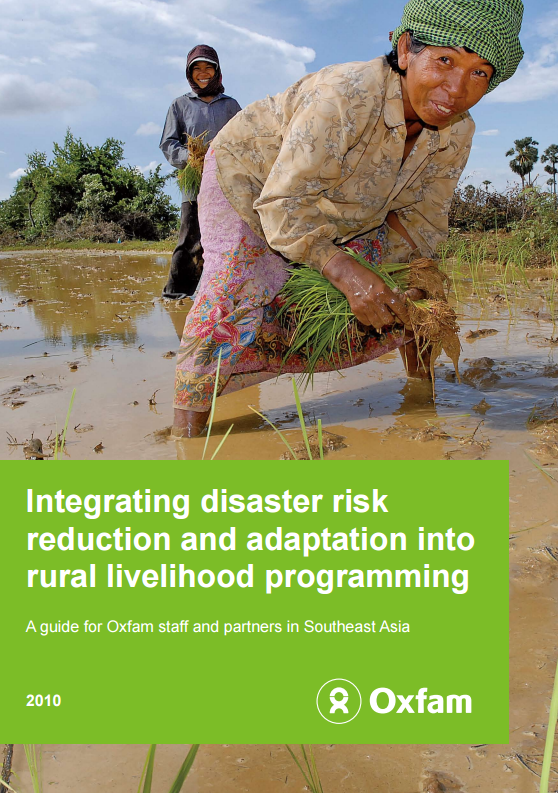Integrating Disaster Risk Reduction and Adaptation into Rural Livelihood Programming - Livelihoods Centre
Publicador de contenidos
Oxfam developed this guide to improve the understanding on how climate change impacts livelihoods in different ecosystems. It is also a tool to learn early on from regional and global experiences and to understand what has worked well and what has not under various contexts. It is intended as a guide for development practitioners implementing rural livelihood and other projects.
The guide focuses on how to reduce climate risk by integrating considerations of disaster risk reduction and climate change adaptation in project design and implementation. It offers a practical, five-step process for identifying disaster risk reduction and adaptation interventions to better manage climate risks, making extensive use of the Participatory Capacity and Vulnerability Analysis (PCVA). The approach recommended in this guide adds value to PCVA as it is currently practised by promoting the combined use of science-based information and insights from climate trends and impacts research, with local knowledge in assessing climate risks to livelihoods. The process upholds the fundamental principles of participatory development, which places the community at the heart of the process. This guide is organized into chapters addressing background, basic climate science, climate risk and analysis (step by step discussion on how to manage climate risks in designing livelihood projects using community insights and scientific information, advice on participatory tools), and annexes with practical examples, additional tips, and background information and a glossary is included to ensure that readers have a common understanding of the climate change terms used.
Available in English.

- Organización:
- Páginas: 49
- Año publicación: 2010
- Derechos de autor: © Oxfam Hong Kong
- Url: http://www.preventionweb.net/files/15723_15723integratingdrrandadpatationint.pdf


